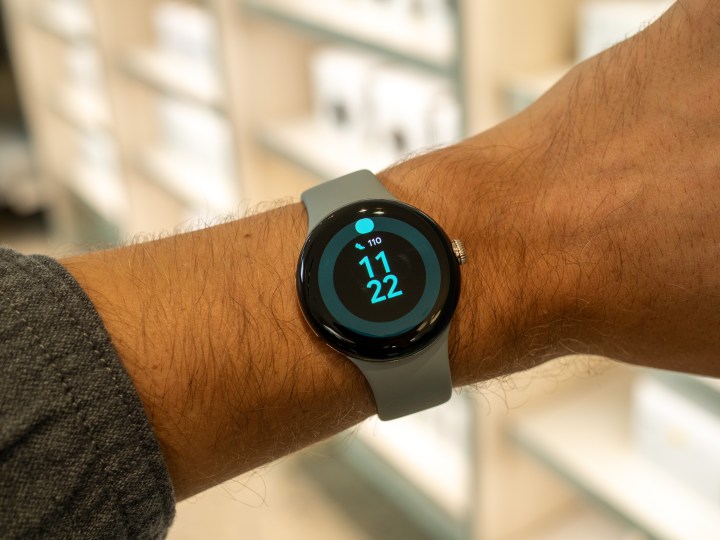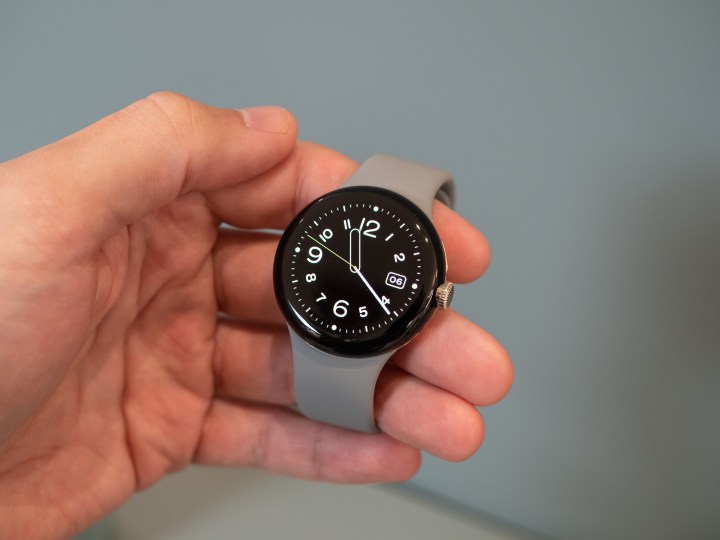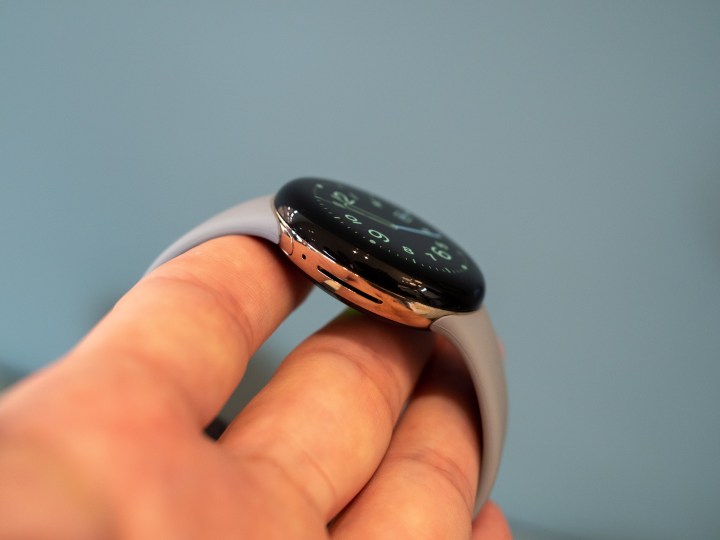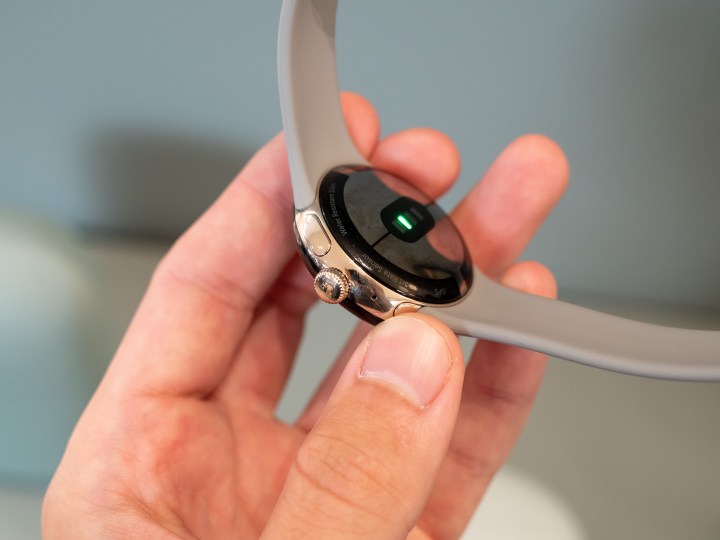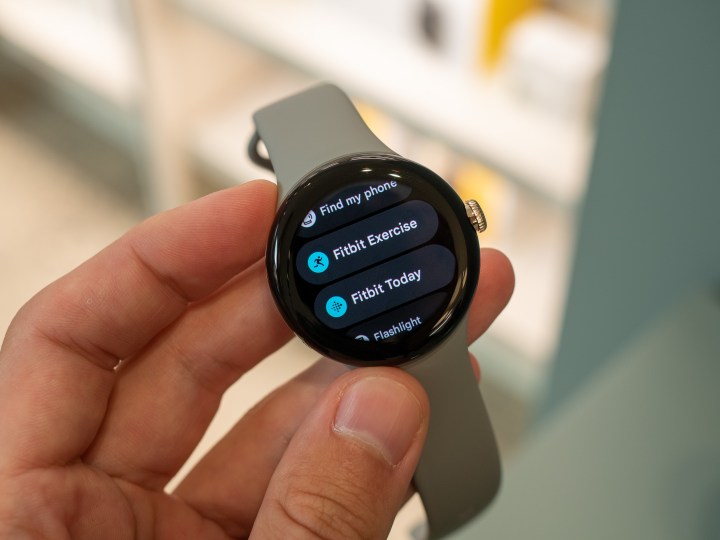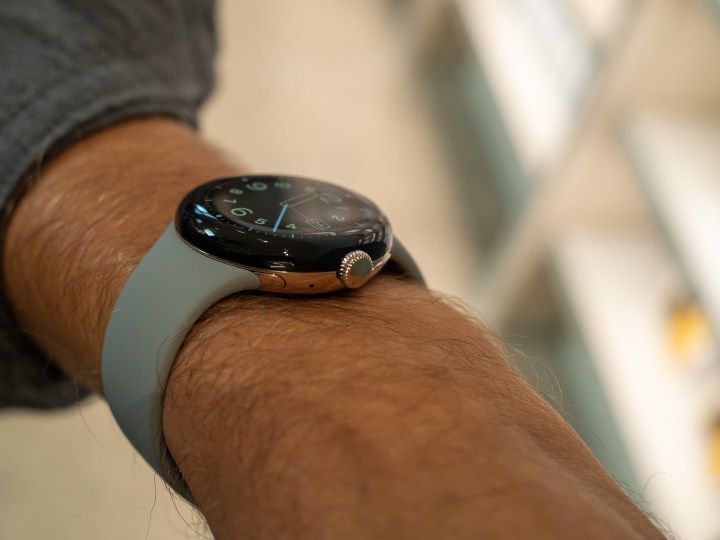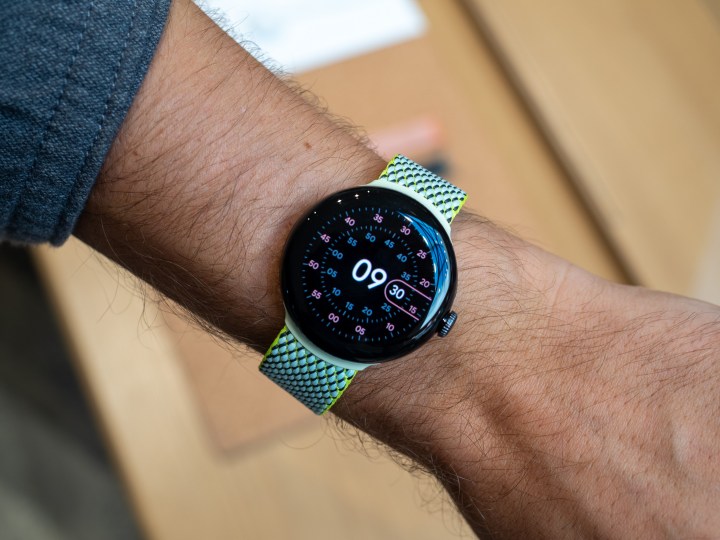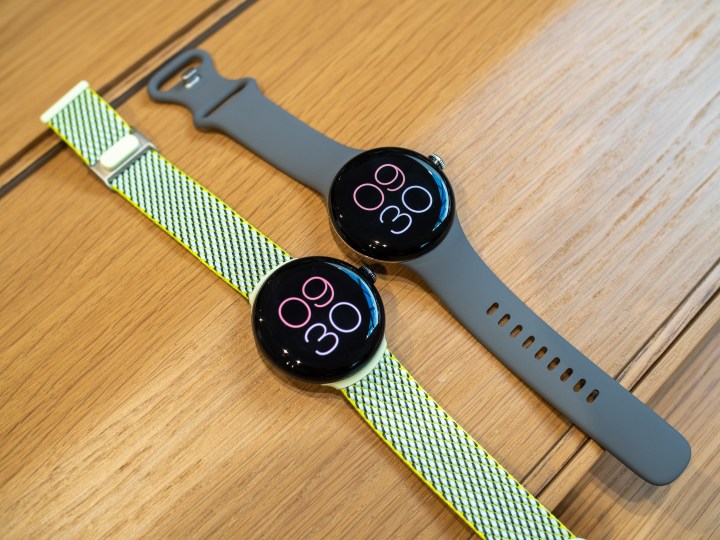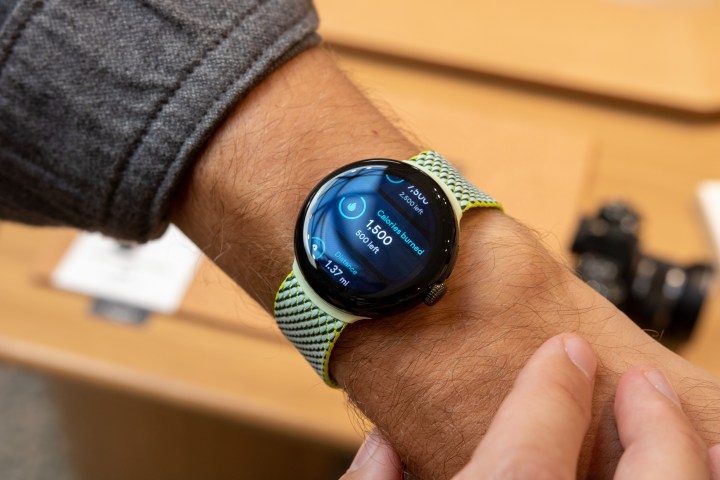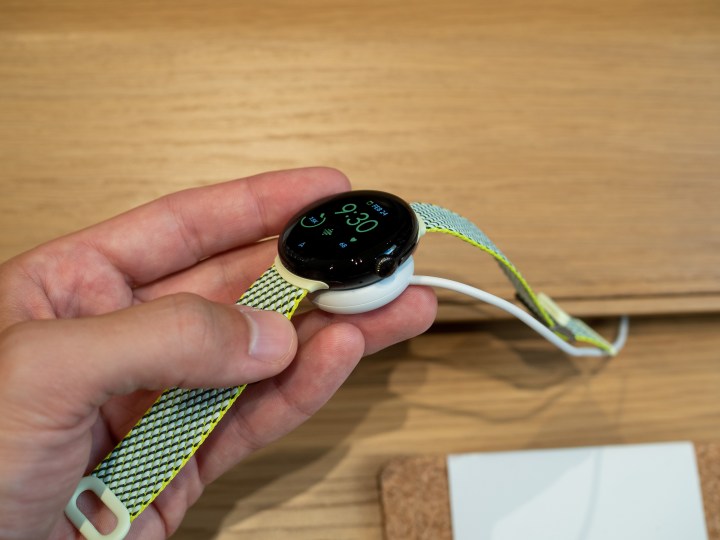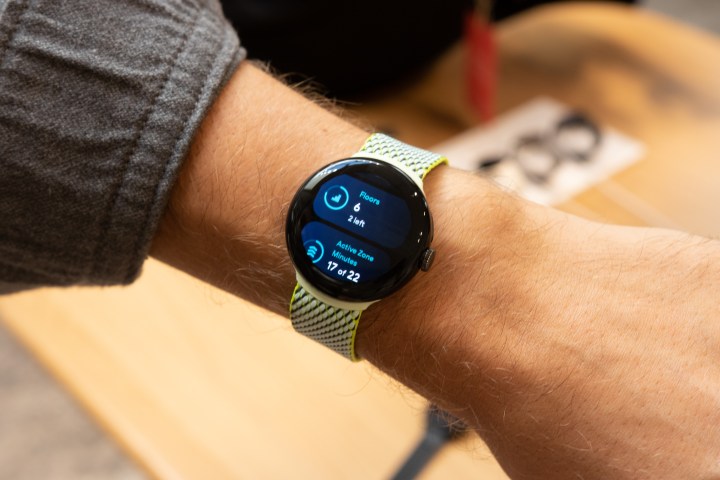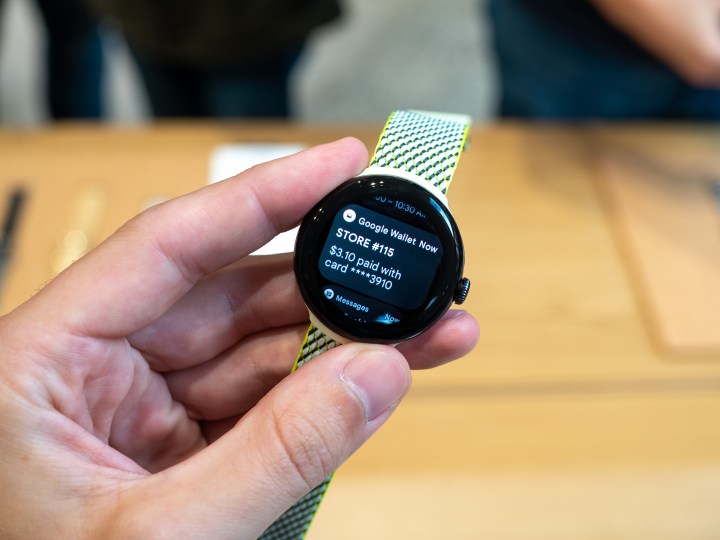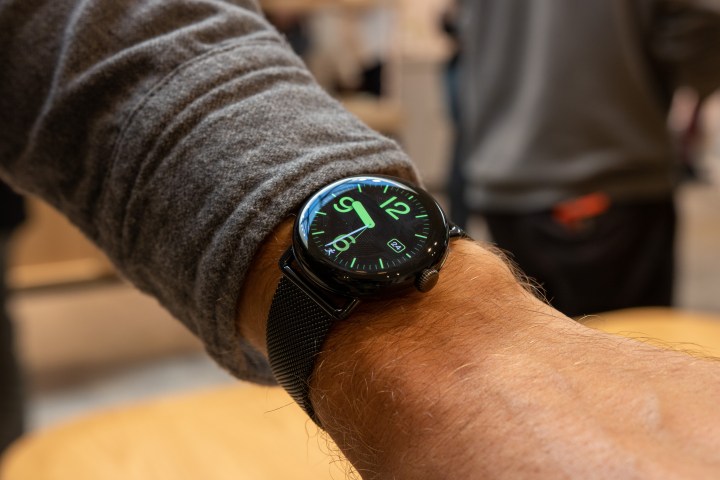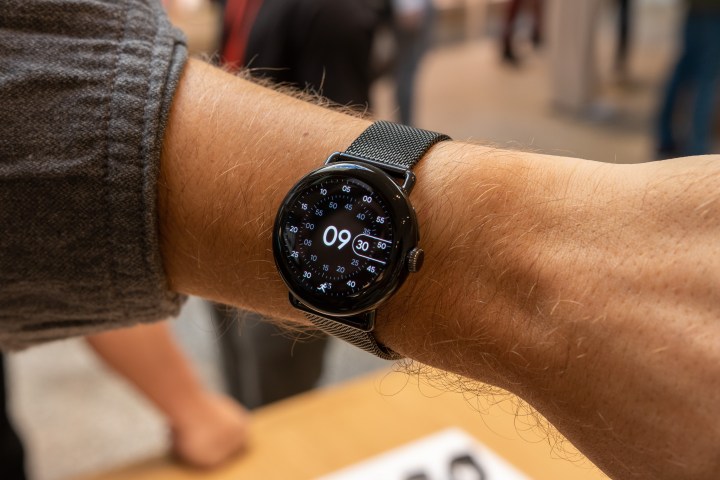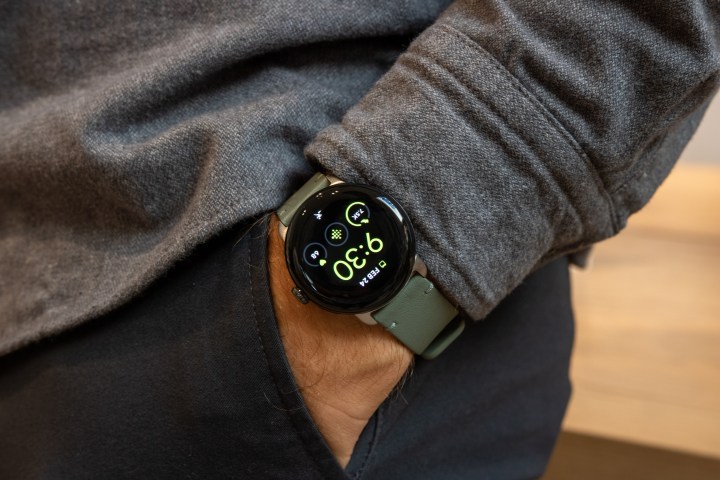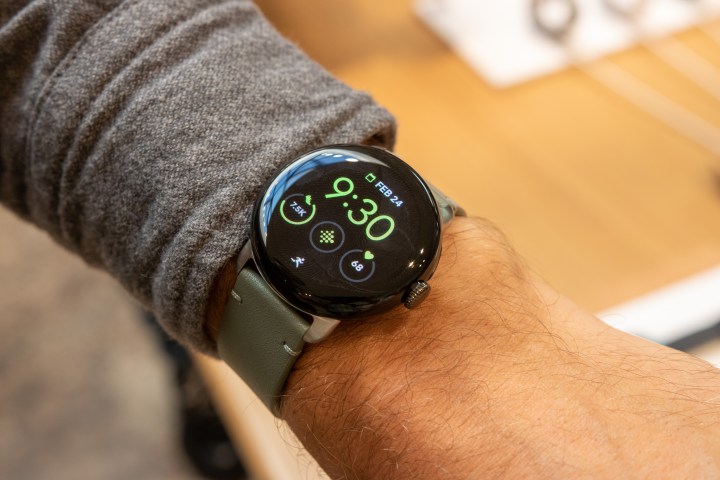Google is in the watch game, everyone! It’s hard to even remember when the “Pixel Watch” rumors first started, but I know it was well before Google acquired Fitbit. And honestly it doesn’t really matter now — I put a Pixel Watch on my wrist today. At least, for a short period of time in the demo area following Google’s October hardware event, where it launched alongside the Pixel 7 and Pixel 7 Pro.
Google’s propensity for simple, near-featureless, hardware design is on full display with the Pixel Watch. The round, pebble-like design is a near-symmetrical sandwich where the glass front flows seamlessly into the metal casing that tapers down to the glass back with little distinction. You get a pop of color to differentiate things in the silver and gold options, but if you go for the black model you’re left with a largely featureless look.
The relentlessly round design is unique compared to the Apple Watch, of course, but while editing these photos I was tripped up a couple of times thinking that I was looking at my Galaxy Watch 5 photos taken a few weeks ago. The aesthetic is particularly bland with the basic rubberized straps, but thankfully Google has a wide swath of other options — from a colorful fabric two-piece strap made of recycled fibers to classy leather and link bracelet options.
I love the way the Pixel Watch straps connect to the case.
The strap attachments themselves are particularly interesting, as they attach to the case in a way I’ve never seen before. Rather than sliding into a slot from the side or attaching with pins, the straps have a curved bracket that matches the curve of the case and slots in seamlessly. You just line them up off-center, push an indentation down, and slot them in with a satisfying click. The effect is a bit lost when you mix and match colors that differ from the case, but if you color-match smartly it looks downright seamless — like the band isn’t removable at all.
Just be ready to pay up: These bands will set you back at least $50. And you may be going with one of Google’s own if you pick up a
Taking a glance at the software front, it looks little-changed from what we’ve experienced on other Wear OS 3 watches (Samsung excluded). The general interface, quick settings, notifications, and app listing are all incredibly familiar. The watch faces are unique to the
Navigating through everything is equally as simple, with that well-sculpted glass making swipes across the interface a breeze. The crown feels great, too, with a nice amount of weight and resistance to it. The single button, which you’ll find on the side above the crown (when worn crown-out on the left wrist) is a bit tough to find blindly, though — it’s nearly flush with the side of the case.
The crown and smoothly sculpted glass make software navigation seamless.
Now, about that bezel. Yes, it’s big! Google does its best to mask the size of the black border around the screen with that aforementioned curved glass and cleverly-designed watch faces that keep color toward the center. But it’s there. This is one of those things where it’s easy to be an armchair hardware designer looking at photos online and thinking it should have a smaller bezel, but honestly when the
As expected Google is talking a big game about its integration of Fitbit’s software and services, particularly if you pay up for the Fitbit Premium membership. Your fitness and activity tracking is now contained in Fitbit-branded apps on the watch, though curiously Google Fit does still exist, for now, presumably to help transition folks who are using it already on another watch.
At $349 for the Bluetooth model, and with years of anticipation behind it, Google has a big set of expectations to fulfill with the Pixel Watch. The Samsung Galaxy Watch 5 comes in at under $300 (retail) with arguably a more robust software experience, more health features, and a proven track record. Google can command a higher price, for sure, but only if it executes on the vision of a unified “Pixel” experience bringing something extra to your wrist. The hardware is undoubtedly well executed, and Fitbit integration could pay dividends, but I need to see how it all comes together in daily use.
I didn’t spend nearly enough time with the
Editors' Recommendations
- Google Pixel 8a: news, rumored price, release date, and more
- 5 ways the Samsung Galaxy S24 beats the Google Pixel 8
- A new Google Pixel Tablet is coming, but it’s not what you think
- Why you need to be excited about the Google Pixel 8a
- Something strange might happen to the Google Pixel Fold 2
